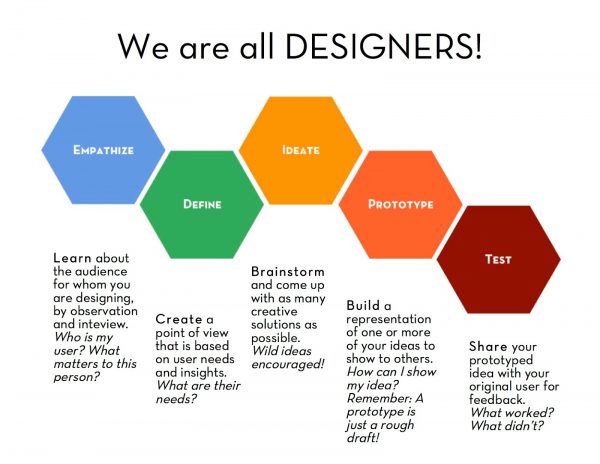Traditional methods of developing an organizational strategy are (or should be) dead. Today’s world is moving too fast for a group of executives to sit in a room and plan the year ahead based on the way business has been done before. If you’re not fostering a culture geared toward exploration and deep customer relationships, you’ll never excel beyond where your organization is today. After all, if you’re not investing time to understand your customer, how do you expect them to invest in you?
In this blog series, I invite you to explore a different way of doing things and consider redefining how you go about developing your strategy. The first part of this series will lay a foundation of what design thinking is and why we use it. The second part will address creating a culture of design within your organization. Later, we’ll dive into the details and methods of using design thinking in your strategy development process, as well as the implications for digital transformation.
A Case for Design Thinking
One of the worst habits associated with traditional strategy, especially in large corporations, is overthinking (aka death by analysis). An obsession with minimizing risk leads to the inability to make decisions fast enough to respond to disruptions. In strategic work, this shows up in fruitless attempts to quantify the unquantifiable and predict the unpredictable.
- How many times have you conducted strategy sessions only to come up short of your goals at the end of the year?
- When was the last time you had truly stellar results? Was it predicted or was it something that “just happened”? More often than not, the organization hit upon something because someone took a risk or took a non-traditional approach to solving a problem.
- Would you like these “stellar” moments to happen more often?
Any real-world strategy starts with having fresh, original insights about your market and your customers. Those insights come only when you observe directly what’s happening in your market. Fortunately, there is a process you can leverage: design thinking.
Design Thinking 101
“Design thinking is a human-centered approach to innovation that draws from the designer’s toolkit to integrate the needs of people, the possibilities of technology and the requirements for business success.” – Tim Brown, IDEO
Now typically, we don’t associate design thinking with developing organizational strategy. It’s usually used to solve problems related to goods or services or some workshop that a manager brought in to foster “out-of-the-box” thinking habits. But the design thinking process embodies the steps that should be taken at the onset of the executive strategy meeting. It helps executives to develop “visionary intelligence” – the ability to think beyond the present set of circumstances, to think beyond parochial self-interest and bottom lines. In fact, it’s a vital way to think about the long term and examine the impact of the solution on other processes, on other people and on the world at large.
The 5 Steps of Design Thinking
Before we begin discussing how a design thinking framework can be applied to strategy development, let’s do a quick review of the primary steps involved in the process.

1. Empathize
When you empathize, you truly begin to understand your customer. This goes beyond personas or talking with a few customers, but actually walking in the shoes of your customer. When we empathize, we do so with a beginner’s mindset. That means we leave all predetermined notions at the door and observe the customer as if seeing everything for the first time. The Zen teacher Shunryu Suzuki writes that, “In the beginner’s mind, there are many possibilities. In the expert’s mind, there are few.” This is why the beginner’s mind is so important to understanding the customer. Empathizing is where deep insights are created, and by observing customers’ situations and how they make decisions, you’ll see areas where you excel and uncover where to focus your time and energy into making something better.
“Empathy is at the heart of design. Without the understanding of what others see, feel, and experience, design is a pointless task.” – Tim Brown, IDEO
The primatologist Frans de Waal writes that the power of empathy to help people collaborate is one of the reasons we became so successful as a species. Wield this power as a designer, and you’ll have the foundation, and the heart, to create great products for humans everywhere.
2. Define
Defining is where you begin to form a point of view (POV) and rely heavily on the insights gained during the empathy phase of the process.
- Identify who, what and why.
- Start to reframe the problem.
Competitive advantages are not established by copying what others have done in the past. They are attained by devising new ways of doing things. Reframing problems and creating a POV also helps with storytelling to get everyone on board.
3. Ideate
You are freshly armed with insights into the customer, have reframed the problem and formed a solid POV. Ideation is all about focusing on the possibilities, not the details. Solving the problem will come next.
“[The] goal is to give you a mass quantity of ideas quickly … not solutions, but the seeds to possible solutions. Solutions take real hard work. Brainstorming gets you the lay of the land quickly for possible solution areas to investigate. But good solutions are like body-building. There’s no way to cheat the hours of the gym you got to put in.”
– Art Sandoval, Lunar Design
The goal is not to focus on the best solution, but to create as many solutions as possible. Attempting to rule out the improbable only serves to stifle the process. The group will collectively decide what moves on to prototype and what does not.
4. Prototype
Prototyping allows us to fail fast. Or as Thomas Edison put it, “I have not failed. I’ve just found 10,000 ways that won’t work.”
In most cases, there are a myriad of failures that preceded every success. Prototyping allows you to take the top solutions from the ideate phase and get something in front of the customer. Why the customer? Because they are ultimately whom you are solving the problem for.
I can think of no better way to ensure success than to ask the person who may buy your goods or services. Prototyping can take many shapes and forms. It could be on paper or onscreen. The medium used is less important – it’s just a representation of the solution for feedback purposes.
Here is a clip from “The Founder” on how the McDonald brothers prototyped the Speedy System to reduce order times. It’s a great representation of prototyping a process:
5. Test
Test early, and test often. This is the mantra one takes during the testing phase of design thinking. Not only does testing early ensure that you aren’t spending too much time perfecting anything, it also ensures that you’re not forming too much of an attachment to any one idea.
Testing is intended to validate your assumptions with the customer. Not all “great” ideas will resonate, and checking in with the customer early and often will save time and money.
The Culture of Design Thinking
Design thinking should be at the core of strategy development and organizational change. This way of thinking can be applied to products, services and processes – virtually anything that needs to be improved. If you take anything away from this post, it should be this:
- We are all designers. We typically think of designers in the traditional sense, but designers are anyone willing to make a change.
- Design thinking is a process. It isn’t a magical artifact or rule. It’s meant to evolve over time.
- Failure is an option. Learning shouldn’t be. If you begin every discovery with a beginner’s mindset, you will be open to possibilities and learn from mistakes.
Stay Tuned for Part 2: The Culture of Design
Want to learn more? Watch for Part 2 of this series and learn how to apply this framework by creating a culture of design within your own organization. And in the meantime, if you have any questions, reach out to our experts anytime. We’ll be happy to help.

